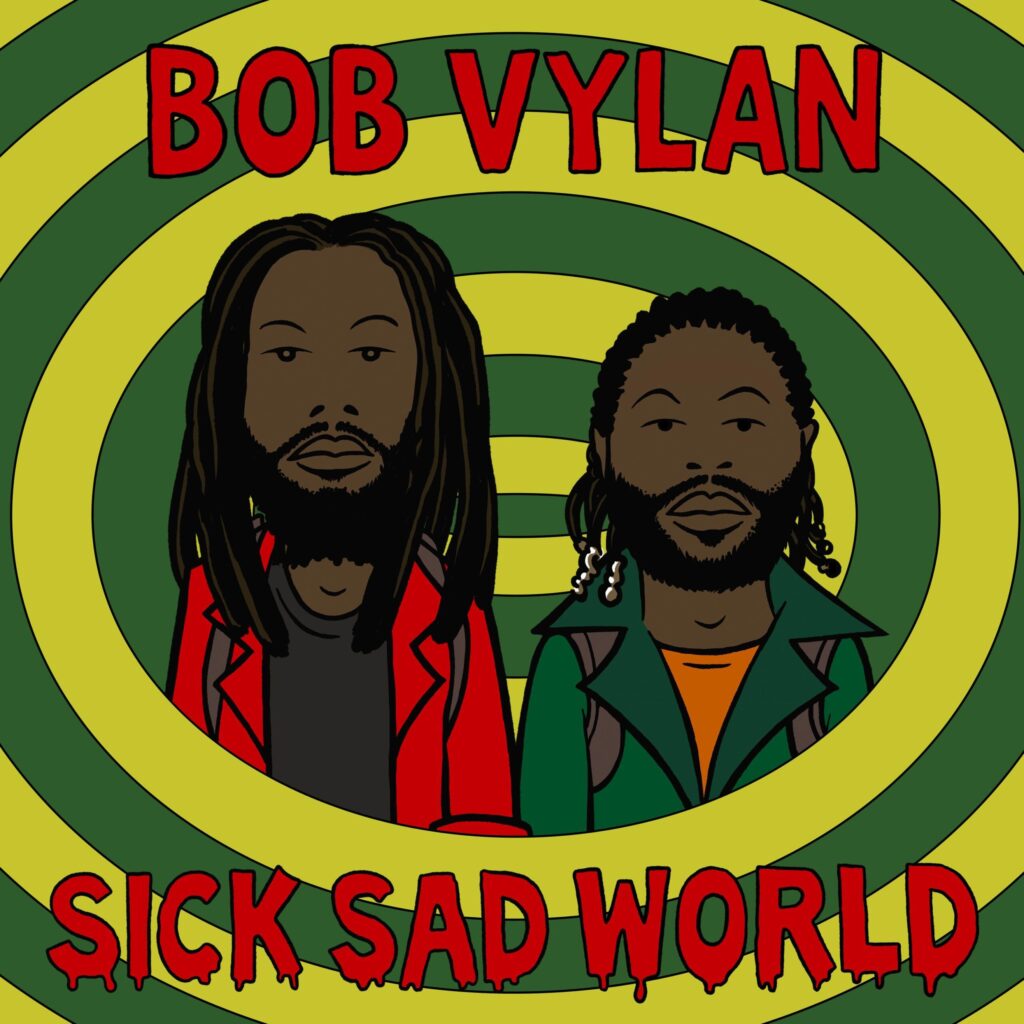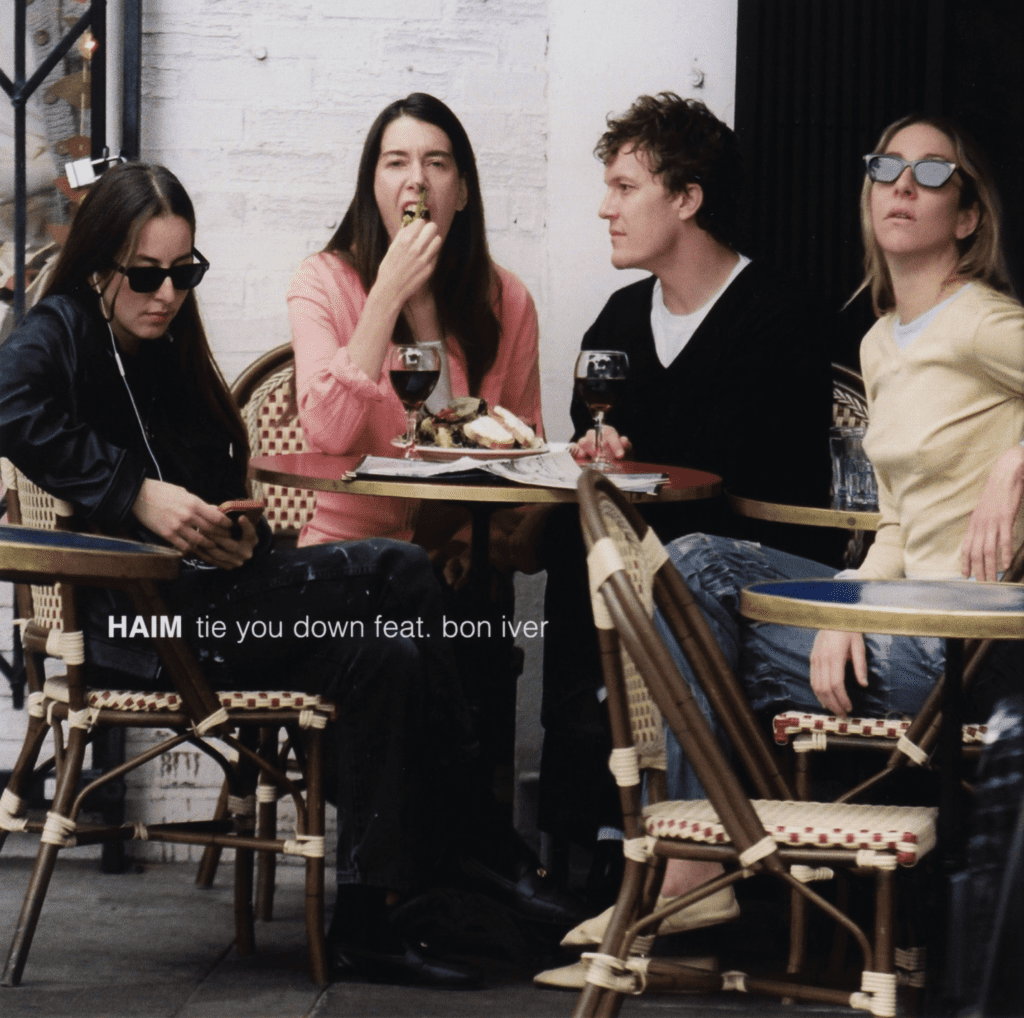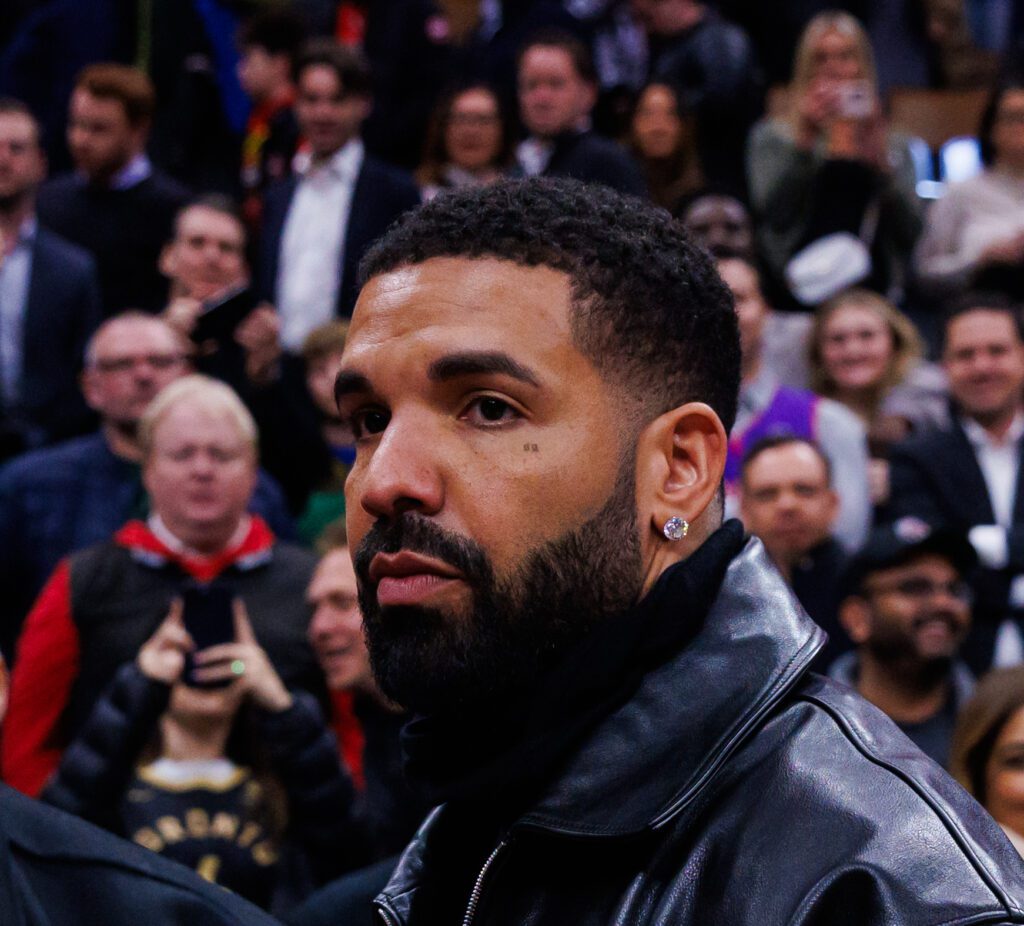It’s not just musicians that shaped rock and roll history — so did their guitars. These iconic axes are almost as important as an extra band member and lent their unique sound and look to some of rock’s most talented icons.
Randy Rhoads’ Polka Dot V

We’re not saying the Polka Dot V is the most iconic guitar of all time, but it may just be the most iconic guitar of all time. Rhoads was known for playing flying Vs. He had both the Jackson Rhoads “Concorde” and the Karl Sandoval “Polka Dot V,” and it’s impossible to say which is the most famous.
As far as iconic guitars go, Rhoads ended up recording Ozzy Osbourne’s “Crazy Train” with the Polka Dot V. Because of its contribution to heavy metal history, this one might take the cake (or the bat head, depending on which you think would make a better snack.)
ADVERTISEMENT
Prince’s Cloud
ADVERTISEMENT

ADVERTISEMENT
Prince was always known for his unique style. The master of funk and soul created a custom guitar, dubbed the “Cloud,” to suit his unique style — it was marked by an extended curved edge. The original model of the guitar was crafted by Dave Rusan, a local Minneapolis luthier, and later reproduced by the iconic guitar brand Schechter. Prince played the ax throughout the ’80s and ’90s, including in his famed Purple Rain movie.
ADVERTISEMENT
In 2017, one of Prince’s custom “Cloud” guitars sold for a whopping $700,000. It’s the highest price that has ever been paid for one of the singer’s guitars and the auction house originally thought it’d go for around $70,000. Apparently, it was a little more iconic than they originally thought.
ADVERTISEMENT
Angus Young’s Jaydee SG
ADVERTISEMENT
ADVERTISEMENT
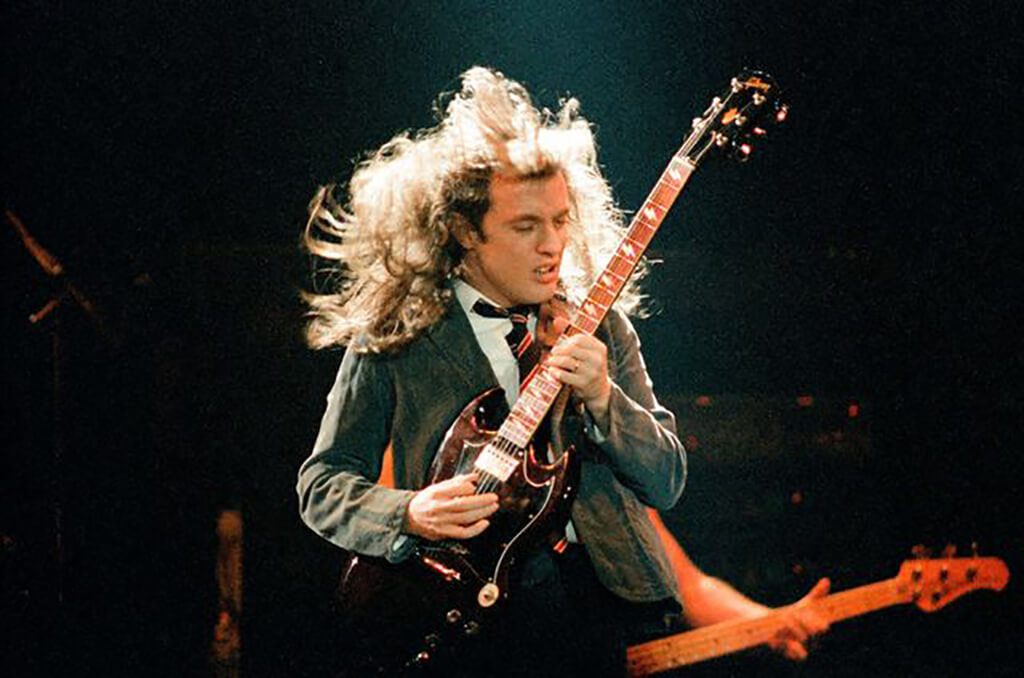
ADVERTISEMENT
There’s a reason SGs are one of the most iconic guitars of all time. Yeah, they’re versatile, but man do they rip. As the weapon of choice for a bevy of rockers – from Tony Iommi to AC/DC’s Angus Young – this is undeniably Gibson’s most popular model.
ADVERTISEMENT
Like Iommi, Angus Young preferred his custom Jaydee Custom SG to his Gibson SG Standard. Can you really blame him? The lightning bolts on the fretboard will go down in history as one of the greatest lessons in rock and roll branding. Today, when you think of Young, you think of two things: a schoolboy uniform and a lightning-bolt fretboard SG.
ADVERTISEMENT
Prince’s Love Symbol Guitar
ADVERTISEMENT
ADVERTISEMENT
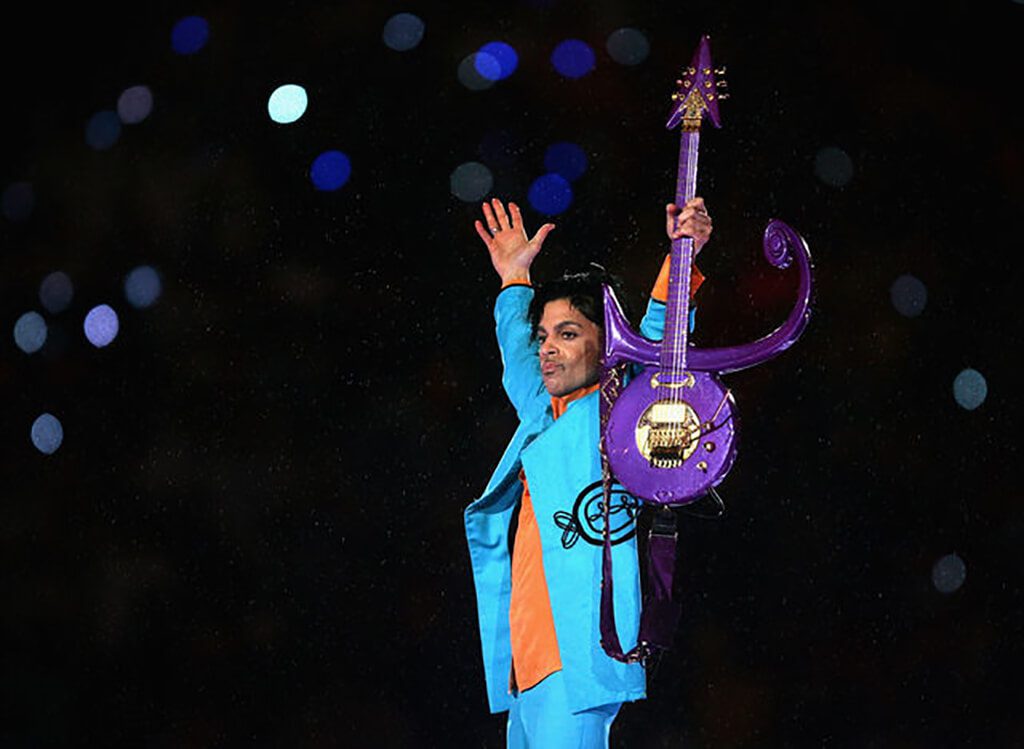
ADVERTISEMENT
In the mid-’90s, Prince changed his stage name to an unpronounceable symbol. This power move came after he found a contractual loophole that would get him out of his deal with Warner Bros. Amidst the rebranding, Prince adopted a brand new guitar.
ADVERTISEMENT
Much like the Cloud, Prince’s Symbol guitar was crafted by Andy Beech. Beech designed 31 guitars for the pop icon, but the Love Symbol guitar was estimated to bring in nearly $1 million at auction. Throughout the ’90s, the artist had various models of the Love Symbol guitar including a shimmery gold version and one in his signature purple.
ADVERTISEMENT
Bo Diddley’s Twang Machine
ADVERTISEMENT
ADVERTISEMENT
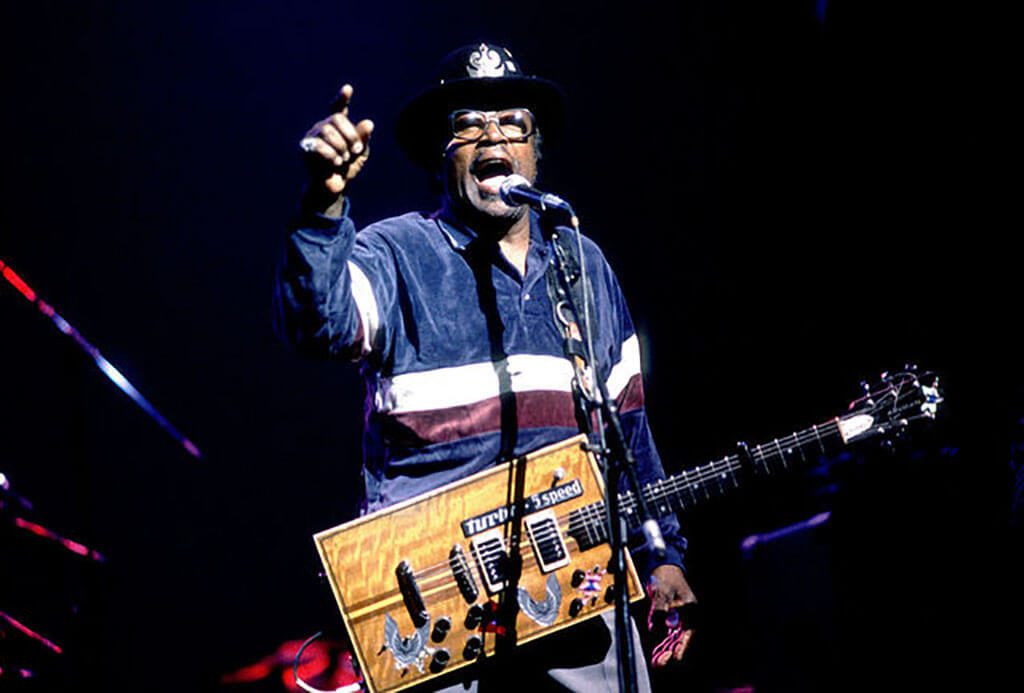
ADVERTISEMENT
Guitars are usually marked by their curves (which undeniably mimic the beauty of the female form), but not Bo Diddley’s. Bo is largely credited with taking the blues of yesteryear and transforming it into modern day rock and roll. His syncopated use of rhythm was dubbed the Bo Diddley Beat. Needless to say, his collection of guitars was also legendary.
ADVERTISEMENT
Diddley was passionate about custom-made guitars and his cigar-box shaped “Twang Machine” was perhaps the most famous. The guitar was crafted by Diddley himself after he suffered from a stage accident that left him with an injured groin.
ADVERTISEMENT
Jimi Hendrix’s Monterey Fender Strat
ADVERTISEMENT
ADVERTISEMENT
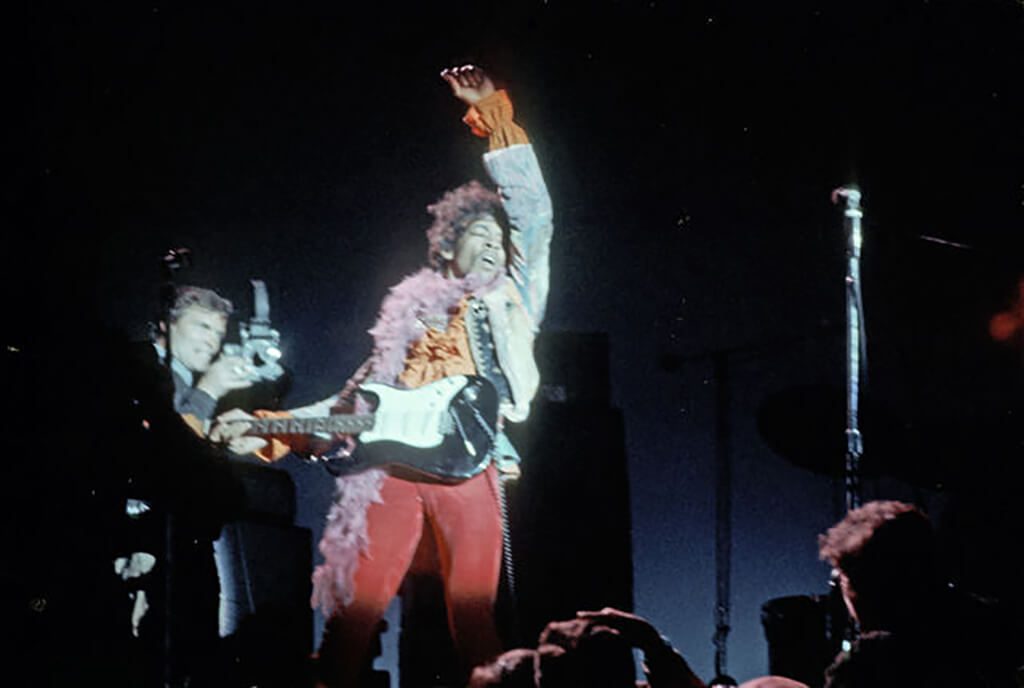
ADVERTISEMENT
To this day, the Fender Stratocaster remains one of the brand’s most popular models. A huge chunk of its icon status can be attributed to Jimi Hendrix, who famously shredded on the guitar at the Monterey Pop Festival in 1967 – but that’s not all he did. His performance was fire, literally.
ADVERTISEMENT
The famed guitarist was closing out his set with “Wild Thing” when he knelt next to his Strat and lit it on fire. There’s nothing quite like DIY pyrotechnics to get the crowd pumped. The moment (and the guitar) went down in rock and roll history.
ADVERTISEMENT
Brian May’s Red Special
ADVERTISEMENT
ADVERTISEMENT
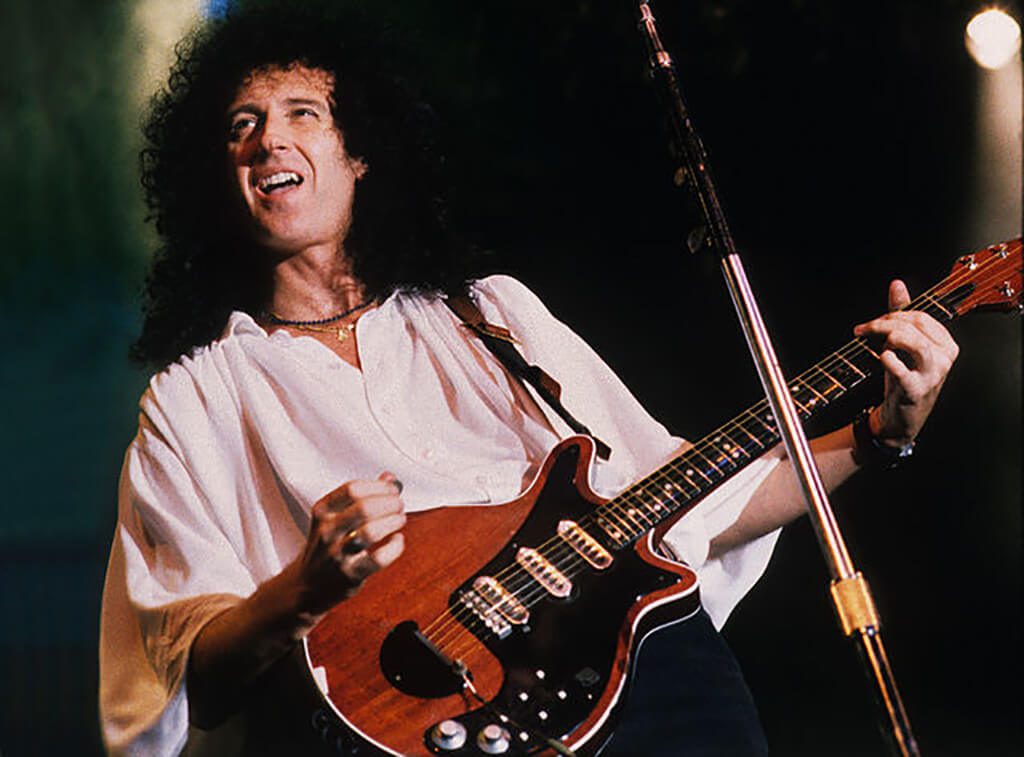
ADVERTISEMENT
Obviously, the guitar that helped pen Queen’s epic hit “Bohemian Rhapsody” deserves a spot in rock and roll infamy. Queen guitarist Brian May’s Red Special is a homemade guitar that managed to leave its hometown and become world-renowned – a feat for something that isn’t a Gibson or Fender.
ADVERTISEMENT
May built the guitar from scratch with his dad. He used an old oak table and part of a weathered fireplace mantle to create the body and neck. The guitar has been kicking around for more than 54 years. It was restored in 1998 and again in 2005 and is still May’s main ax to this day.
ADVERTISEMENT
Gene Simmons’ Axe Bass
ADVERTISEMENT
ADVERTISEMENT
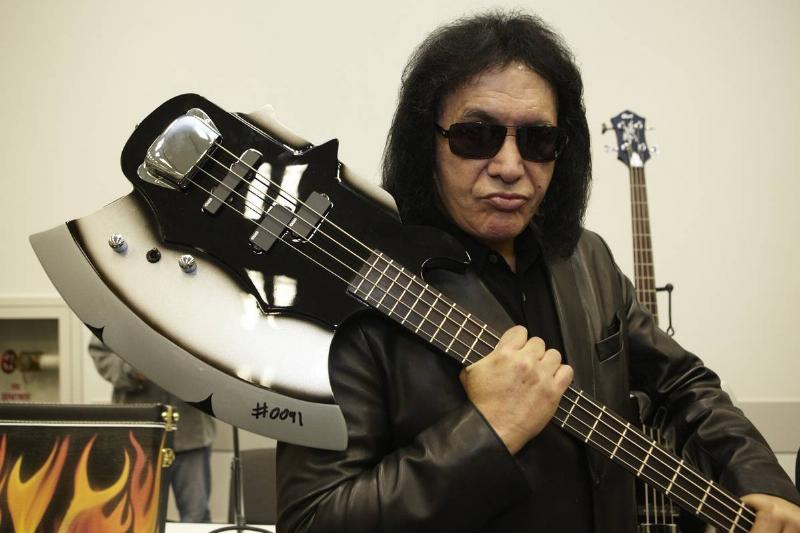
ADVERTISEMENT
Kiss was known for their wild stage costumes and general debauchery – but what’s a costume without a sick guitar? Gene Simmons’ Axe Bass was a strong stage perspective, and something he stuck with throughout his career. The Axe was a rather brilliant tongue-in-cheek interpretation of a slang term for a guitar (even though you know Simmons’ tongue hardly ever stays in his mouth).
ADVERTISEMENT
Simmons’ original Axe Bass was crafted by luthier Steve Carr and licensed to Cara Guitars. This means you’re able to buy the famous Axe on the company’s website. All you need is about $5,000. Iconic guitars aren’t cheap!
ADVERTISEMENT
Jimmy Page’s Double Neck Gibson
ADVERTISEMENT
ADVERTISEMENT
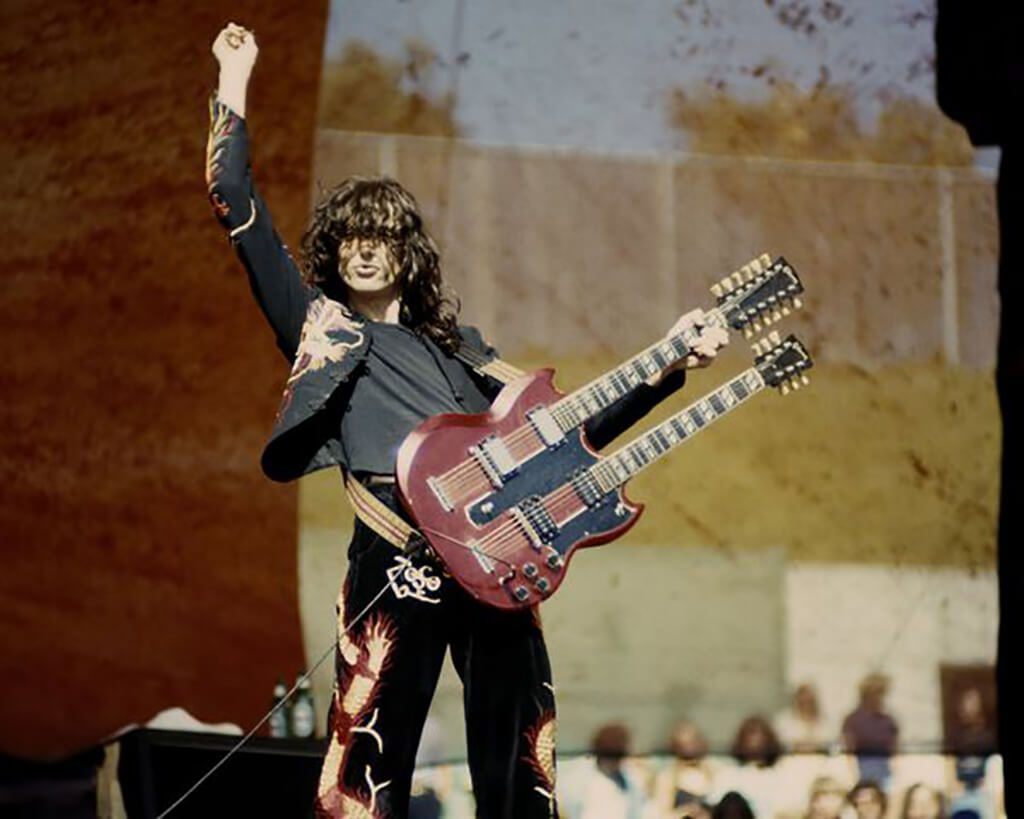
ADVERTISEMENT
There are few guitar licks as iconic as the one in Led Zeppelin’s “Stairway to Heaven.” Even today, you can pretty much hear the riff echoing throughout every guitar shop in America (much to the disdain of overworked Guitar Center employees.) With every iconic song comes an iconic guitar, and Jimmy Page’s double-neck Gibson EDS-1275 does not disappoint.
ADVERTISEMENT
The double neck guitar allowed Page to simultaneously use a 12-string and 6-string guitar (one neck was on the top and the other was on the bottom.) It allowed this real-life guitar hero to effortlessly switch back and forth, which helped form the song’s epic sound.
ADVERTISEMENT
George Harrison’s Rickenbacker
ADVERTISEMENT
ADVERTISEMENT
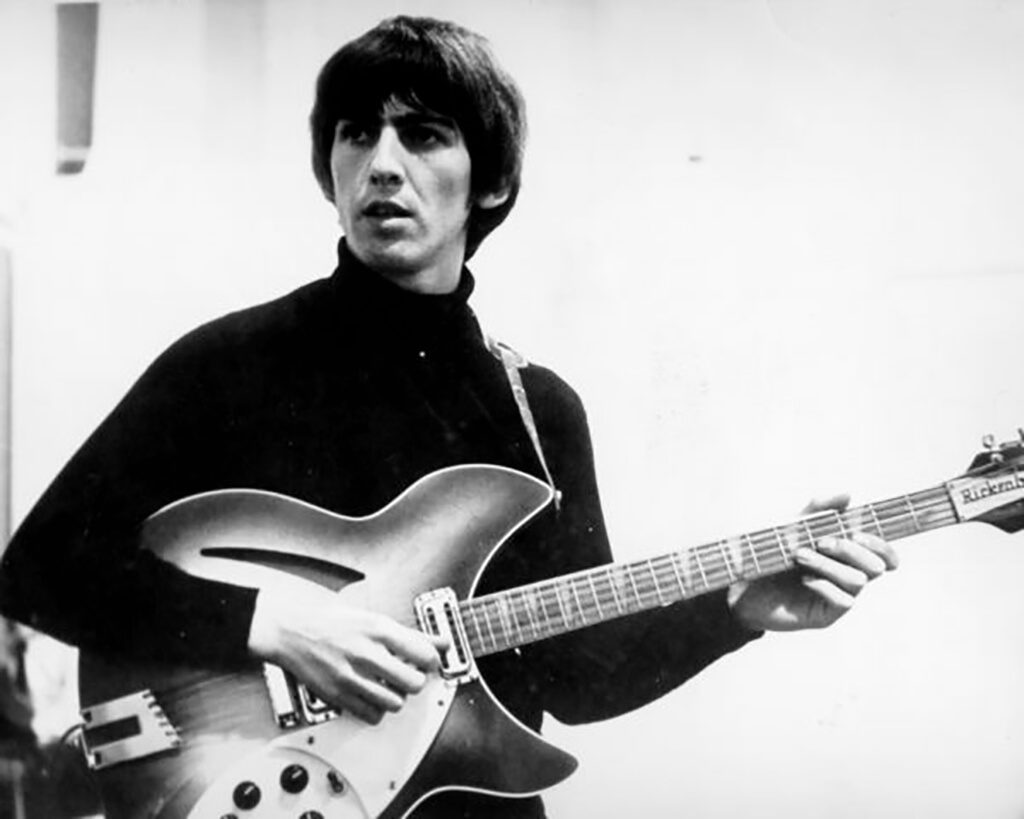
ADVERTISEMENT
George Harrison may be well known for playing a Gretsch, but the former Beatles’ 1963 Rickenbacker 12-string is his most famous guitar. Back in the ’60s, Rickenbacker already had more than 30 years of history. They gifted Harrison the 12-string for the group’s very first U.S. tour – but its icon status was all happenstance.
ADVERTISEMENT
In many ways, Harrison’s Rickenbacker is a symbol of the British invasion, which changed modern rock music, but he didn’t pick the guitar himself. Harrison was sick in bed at the Plaza hotel when his bandmates were shown various Rickenbacker models. Lennon passed on the 12-string and gave it to Harrison instead, who completely fell in love.
ADVERTISEMENT
Paul McCartney’s Hofner Bass
ADVERTISEMENT
ADVERTISEMENT
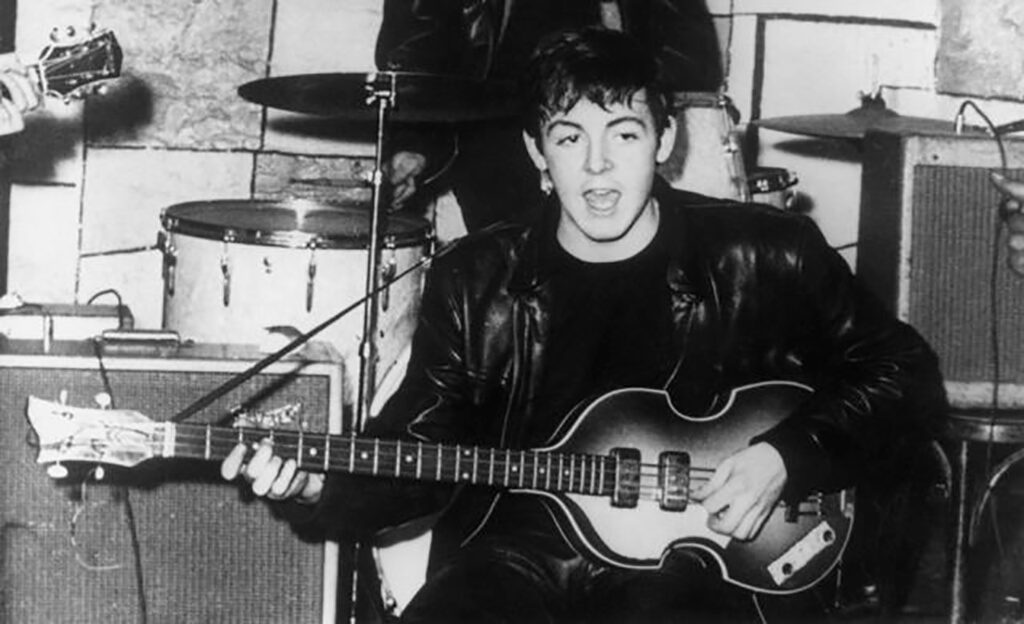
ADVERTISEMENT
If there’s one image of the Beatles that will forever be cemented in rock and roll history, it’s Paul McCartney holding his iconic violin-shaped Hofner bass over his head like a sword during their Shea Stadium performance. It was later dubbed “the Beatle Bass,” but McCartney didn’t always play this iconic instrument.
ADVERTISEMENT
In the early ’60s, McCartney played a Rosetti 7 bass upside down in order to convert it into a left-handed instrument. It looked undeniably awkward. He encountered the violin-shaped bass while the band were apprentices in Hamburg, Germany and fell in love with the symmetrical look. McCartney claimed the symmetrical body made playing left-handed look “less daft.” He wasn’t wrong.
ADVERTISEMENT
Rick Nielsen’s Five-Neck Hamer
ADVERTISEMENT
ADVERTISEMENT
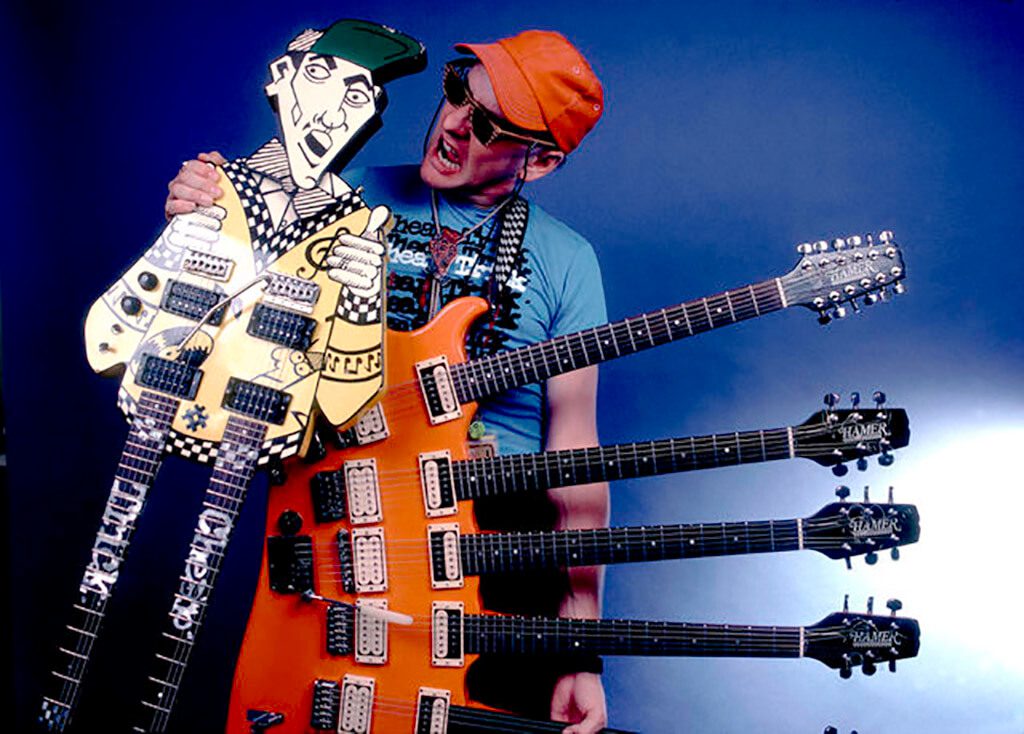
ADVERTISEMENT
Leave it to Cheap Trick’s Rick Nielsen to master the most ridiculous of all custom guitars. The Five-Neck Hamer is the rat king of the guitar world (if you’re unfamiliar with rat kings – don’t look it up). Nielsen is a true showman who had enough cash to blow on three custom five necks — the equivalent of 15 guitars – thanks to Cheap Trick’s success. The original, which had a smooth orange finish, was built in 1981 and currently lives on the wall of Nielsen’s restaurant, but it’s hard to ignore the checkboard model as the epitome of ’80s absurdity.
ADVERTISEMENT
“The original concept was to have a six-neck that spun like a roulette wheel, so that I could play one neck and then rotate to the next, but then I decided to go with something more conservative—five necks in a row,” said Nielsen.
ADVERTISEMENT
Neil Young’s Old Black
ADVERTISEMENT
ADVERTISEMENT
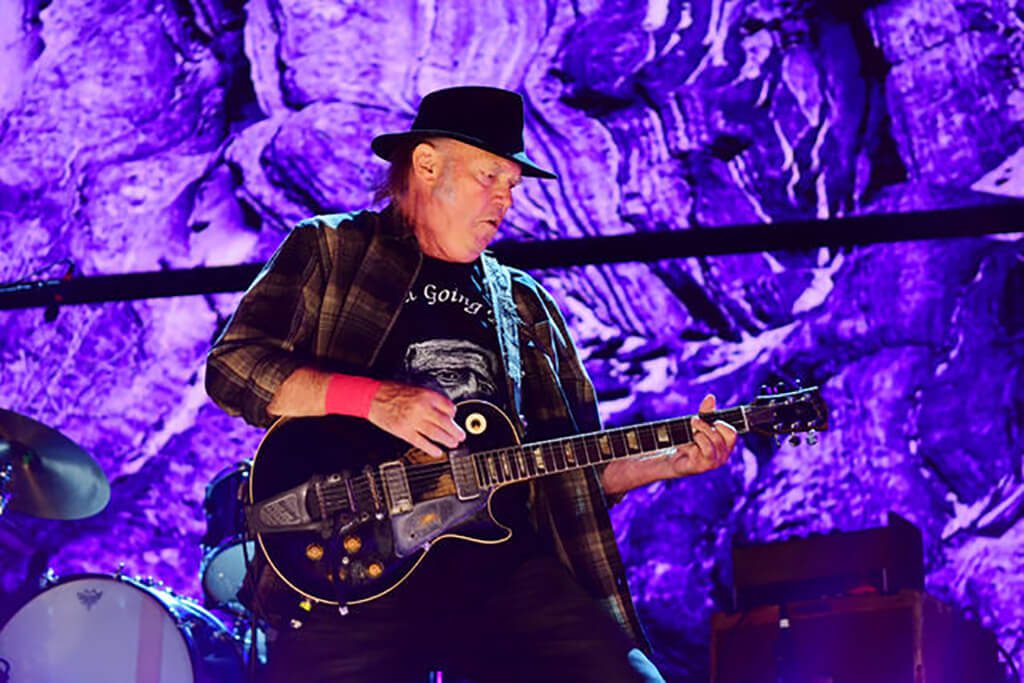
ADVERTISEMENT
Throughout his career, Neil Young has been nominated for a whopping 26 Grammy awards. His singles like “Harvest Moon,” a 1994 banger, are still played on the radio today. Young’s guitar is almost as iconic as his music because he’s stuck with it throughout his entire decades-long career. Old Black, as it’s been affectionately dubbed, has been with the singer-songwriter for nearly 50 years since he won it in a trade with Jim Messina from Buffalo Springfield.
ADVERTISEMENT
Young has played Old Black on almost every album since Everybody Knows This Is No Where was recorded in 1969. Through repairs and modifications, this 1953 Gibson Les Paul Goldtop was built to last.
ADVERTISEMENT
St. Vincent’s Sterling Music Man
ADVERTISEMENT
ADVERTISEMENT

ADVERTISEMENT
As one of the few female guitarists to gain worldwide-fame, St. Vincent’s Ernie Ball Music Man will go down in history. The unique guitar uses a couple of different woods for its signature look and sound – African mahogany, maple, and rosewood or ebony (for the fretboard.) It’s complete with three Dimarzio mini-humbuckers (which help craft St. Vincent’s fuzzy brand of indie rock) and custom inlays.
ADVERTISEMENT
Ernie Ball currently touts the singer’s signature model as the “Shape of the Revolution.” Perhaps this revolution involves a world where instrument companies champion female talent, even if Jack White used the instrument during a recent performance on SNL.
ADVERTISEMENT
B.B. King’s Lucille
ADVERTISEMENT
ADVERTISEMENT
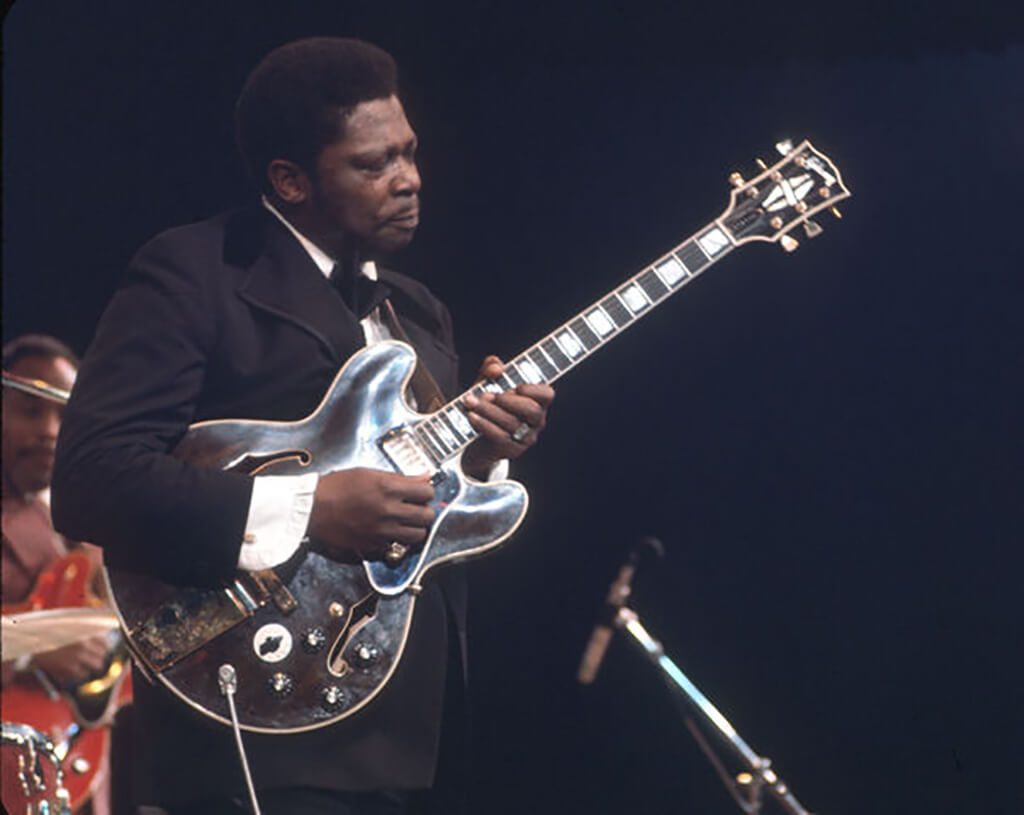
ADVERTISEMENT
B.B. King’s iconic Gibson wasn’t always a valuable guitar. In fact, it was worth just $30 when he got it. In 1949, King was hanging around a dancehall when a fire was started by two men who were fighting over a woman. The famed blues musician pulled the cheap guitar from the burning wreckage and named it after the woman who sparked the argument. Her name was Lucille.
ADVERTISEMENT
King names each of his guitars – a variety of Gibsons and Telecasters – but in the ’80s, this became his signature model. Gibson became manufacturing the “Lucille” as a combination between their hollow and solid body ES-355.
ADVERTISEMENT
Tony Iommi’s Old Boy
ADVERTISEMENT
ADVERTISEMENT
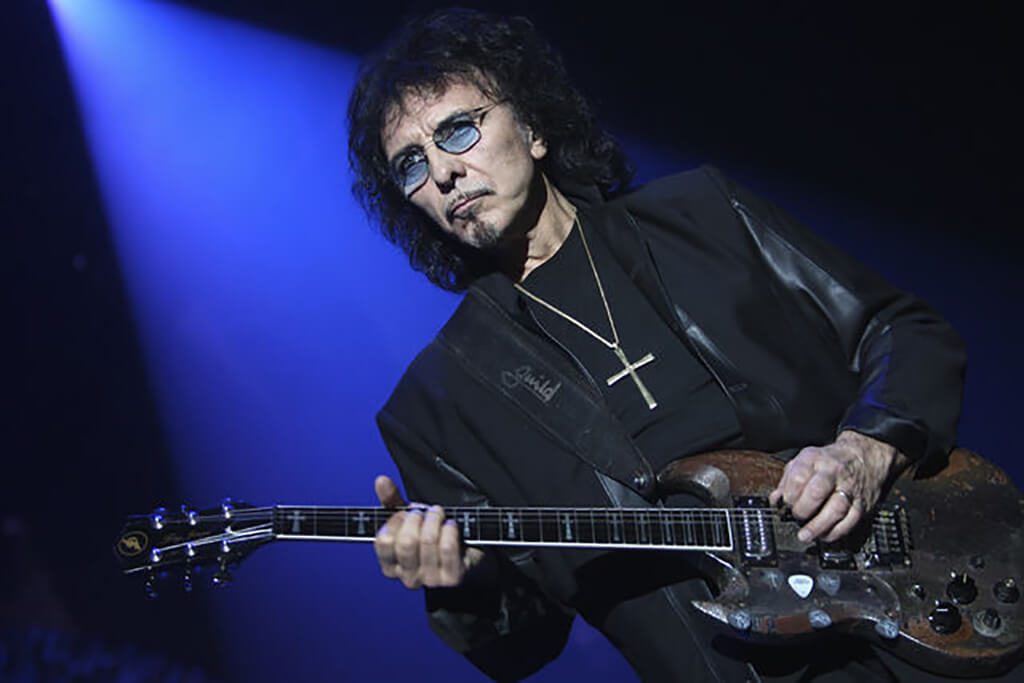
ADVERTISEMENT
Iommi’s Old Boy was crafted in 1975 by luthier John Diggins. He used the ax to slay Black Sabbath’s “Heaven and Hell,” as well as a number of their most famous LPs. This guitar may be his most famous, but it’s not his most used.
ADVERTISEMENT
The Old Boy – a Jaydee Custom SG – isn’t even Tony Iommi’s main guitar. He opts to use a Gibson SG “Monkey” for his main rig, but the crosses on the fretboard and the faded black and red paint make this an iconic relic of hard rock history. When you think of Iommi, you think of him slaying the cross-clad frets.
ADVERTISEMENT
Jerry Garcia’s Tiger
ADVERTISEMENT
ADVERTISEMENT
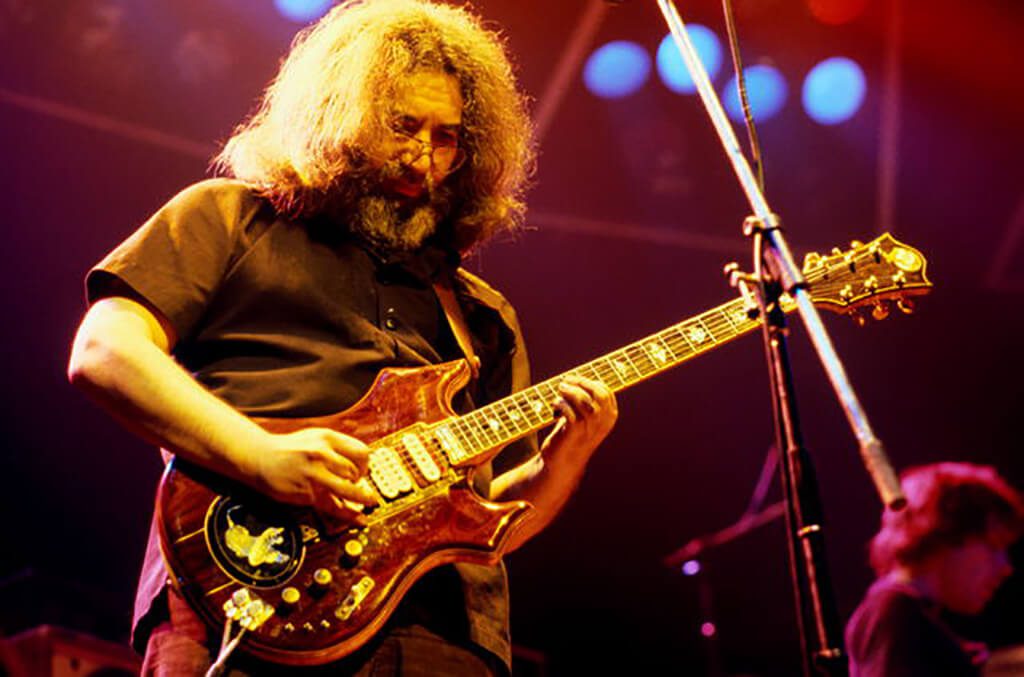
ADVERTISEMENT
Jerry Garcia’s “Tiger” wasn’t just his guitar of choice – it was the ax he played on his very last concert. The guitar, which Garcia played for more than 10 years, was built by Sonoma-based luthier Doug Irwin, but it’s not for the faint of heart. Garcia’s guitar was heavy. The body, which was comprised of several layers of laminated wood, weighed over 13 pounds.
ADVERTISEMENT
This guitar almost missed out on its iconic status. If it wasn’t for the fact that Garcia’s second rig, an Irwin-crafted ax called Rosebud, was in major need for repairs during the summer of 1995, Garcia wouldn’t have played the Tiger for his last gig.
ADVERTISEMENT
Kurt Cobain’s Fender Jaguar
ADVERTISEMENT
ADVERTISEMENT
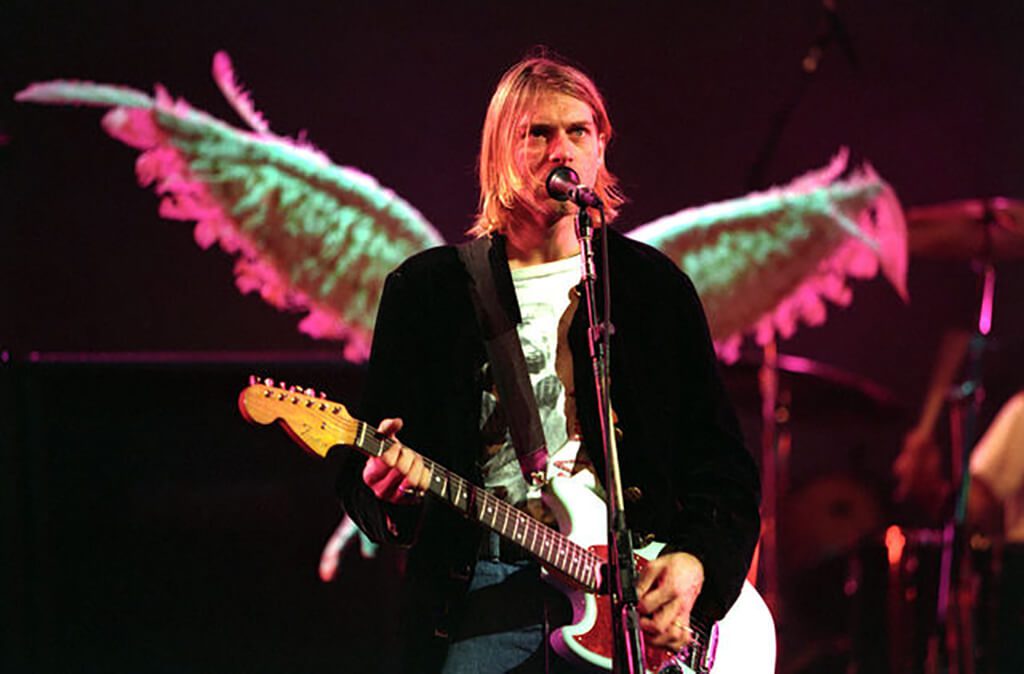
ADVERTISEMENT
Nirvana completely changed modern rock music, so it’s not surprising that Kurt Cobain’s guitar is also an icon. In fact, one of his guitars was a hot-ticket item in Frances Bean Cobain’s divorce. The late star’s 1959 Martin D-18E, which he played in Nirvana’s iconic 1993 MTV Unplugged performance, was awarded to Frances’ ex-husband (a controversial move if you ask a music enthusiast.)
ADVERTISEMENT
Though Cobain’s unplugged acoustic was undeniably worth a pretty penny, the artist was best known for his Fender Jag-Stang. This guitar, which Cobain designed himself by cutting together Polaroid photos, was a combination of the brand’s renowned Mustang and Jaguar. After Cobain’s passing, the baby blue model was given to R.E.M.’s Peter Buck. He played it in the video for the band’s single “What’s the Frequency Kenneth?”
ADVERTISEMENT
Keith Richards’ Micawber
ADVERTISEMENT
ADVERTISEMENT
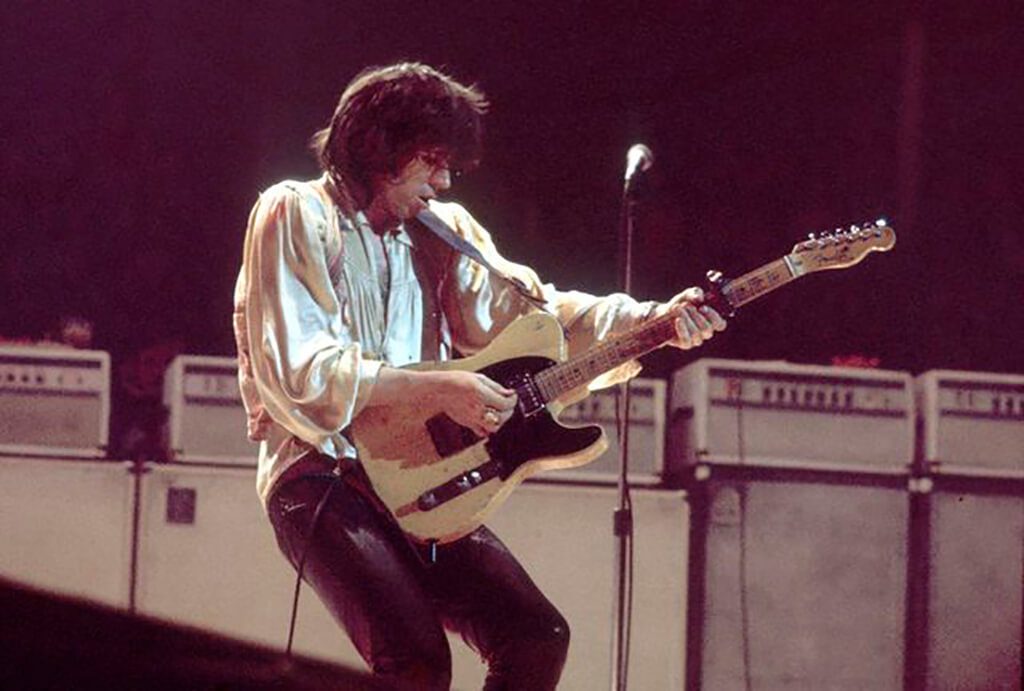
ADVERTISEMENT
The Rolling Stones undeniably shaped modern rock and roll with hits like “Brown Sugar” and “Honkey Tonk Women.” Without riff-master Keith Richards’ famed guitar, almost none of it would be possible.
ADVERTISEMENT
Richards’ Micawber was actually a birthday gift from Eric Clapton. The guitarist received the ax on his 27th birthday before beginning work on Exile on Main Street. The 1950s-era Telecaster had the sixth string removed and was tuned to open G which helped craft the Stones’ signature sound. To make things even more unique, Richards flipped the humbucker pickup backward, which gave it some extra bite.
ADVERTISEMENT
James Hetfield of Metallica Rocks His EET FUK ESP Explorer
ADVERTISEMENT
ADVERTISEMENT

ADVERTISEMENT
James Hetfield was the first owner of an EET FUK guitar, which he played both in the studio for Suicide and Redemption and on stage. He didn’t go easy on the instrument, which had to be repaired several times.
ADVERTISEMENT
The EET FUK sticker on the axe is two-thirds of the slogan he originally wanted on the guitar, which we can’t explain here, but maybe you can figure it out for yourself. 45 models of the guitar were made before Hetfield requested they stop producing them. They’re all designed in Olympic white.
ADVERTISEMENT
Tom Morello’s “Arm The Homeless” Custom Guitar Isn’t Great, But He Likes It Anyway
ADVERTISEMENT
ADVERTISEMENT

ADVERTISEMENT
Tom Morello of Rage Against The Machine didn’t exactly have the nicest words to say about his new custom guitar when it came out of the shop, but he plays it anyway. Morello specially ordered the guitar from a custom guitar shop in Hollywood, but it didn’t come out as expected.
ADVERTISEMENT
He told Music Radar, “Everything about it was bad: it looked bad, it sounded bad, it was grotesquely overpriced, and over the course of the next two years I changed literally everything about it except for the piece of wood.” He has something written on the back as well… that you’ll have to look up for yourself.
ADVERTISEMENT
Willie Nelson’s Trigger Guitar
ADVERTISEMENT
ADVERTISEMENT
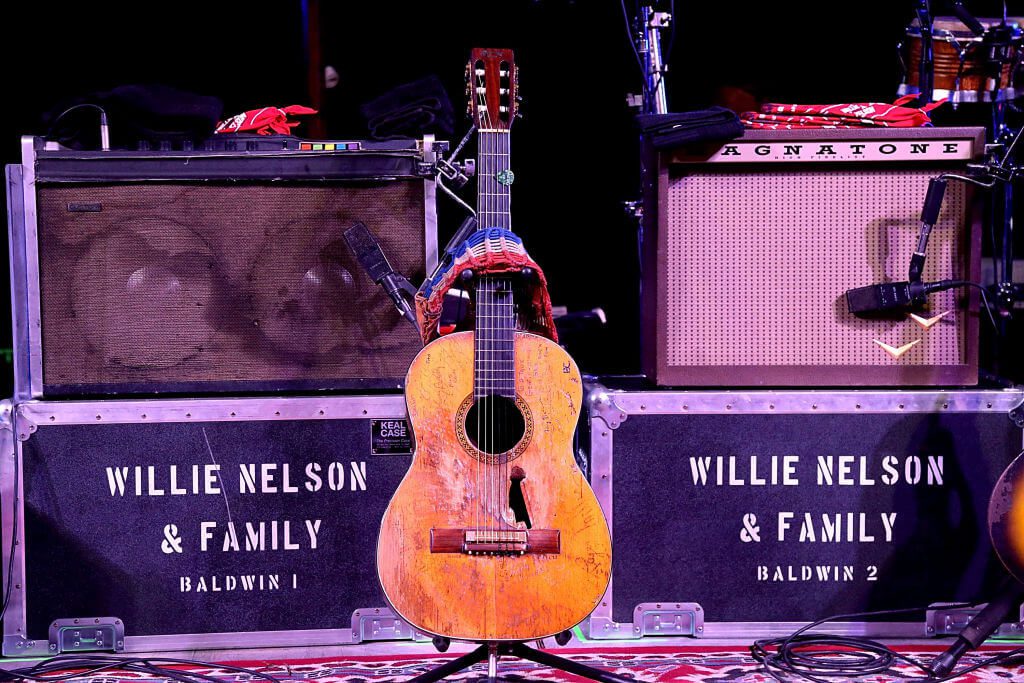
ADVERTISEMENT
As haggard as it looks, we better hope that Willie Nelson’s acoustic Martin N-20 guitar doesn’t stop working. Nelson bought the acoustic guitar back in 1969 and it’s been in his hands ever since. That’s not to say that it’s in mint condition, this instrument has suffered quite a bit of damage over the years.
ADVERTISEMENT
For one, there’s a hole where a pick-guard could have been. Nelson has claimed before, “When Trigger goes, I’ll quit.”
ADVERTISEMENT
Zakk Wylde’s Bullseye Gibson Les Paul
ADVERTISEMENT
ADVERTISEMENT
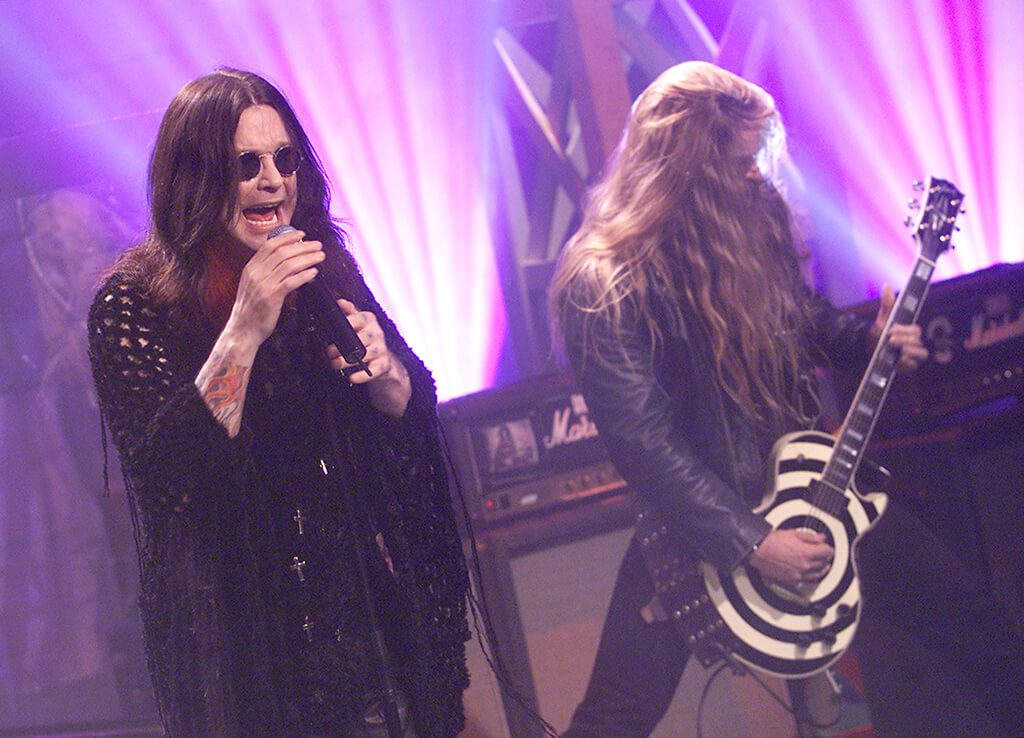
ADVERTISEMENT
When you’re touring with Ozzy Osbourne, you gotta step it up a bit in terms of stage presence. Maybe that was guitarist Zakk Wylde’s thinking when he purchased the Bullseye Gibson Les Paul. It’s not his first Gibson Les Paul, by any means, and it’s actually not what he had in mind as far as the graphic goes.
ADVERTISEMENT
“I saw the poster from Vertigo and thought that would be [expletive] awesome. I had drawn it on a piece of paper and everything…” but long story short, when the guitar arrived, it wasn’t what he wanted. He rocked it anyway.
ADVERTISEMENT
Muse Frontman Matt Bellamy’s Black Kaoss Manson
ADVERTISEMENT
ADVERTISEMENT
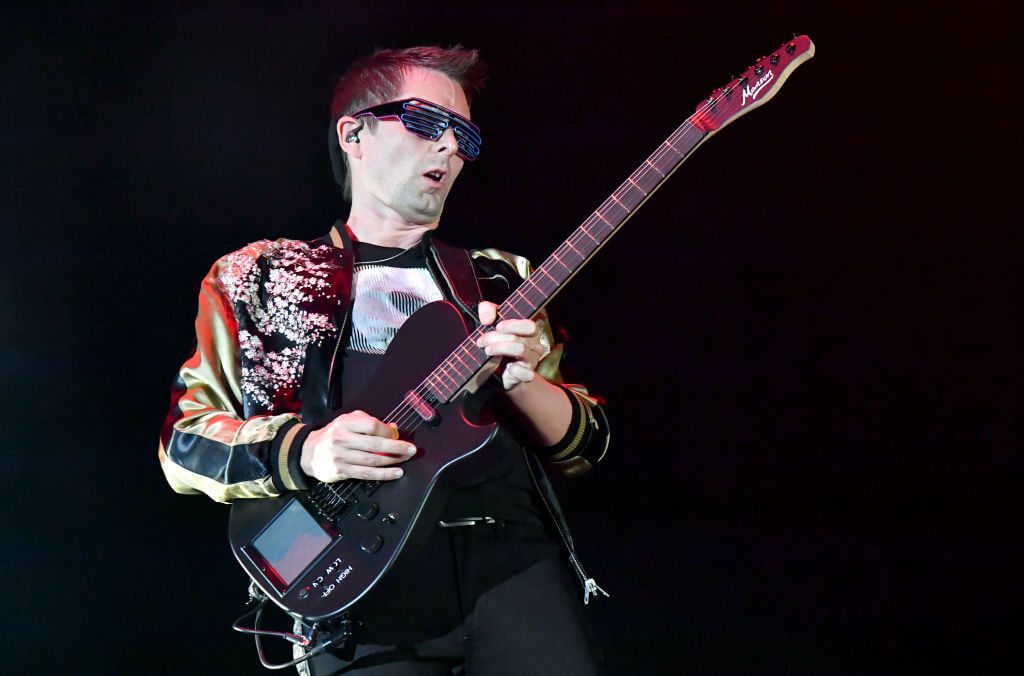
ADVERTISEMENT
Matt Bellamy, guitarist and lead singer of Muse, has several custom Manson guitars, but we’re taking a closer look at his Black Kaoss Manson. We first spotted Bellamy playing the Black Kaoss in 2006. The guitar is a good match for Muse’s sound, with a Korg Kaoss pad and MIDI controller for special effects during live performances.
ADVERTISEMENT
The guitar is also designed with a pair of hot P90’s in the bridge position. It’s officially named M1D1 Black.
ADVERTISEMENT
Jack White’s Airline Guitar
ADVERTISEMENT
ADVERTISEMENT

ADVERTISEMENT
Jack White has made his mark on the music industry and he did it in style. White rocked this 1960s vintage Airline guitar as part of his three-guitar rotation while on tour. It was originally made by Valco and was sold at a reasonable price in Montgomery Ward catalogs back in the day.
ADVERTISEMENT
However, White brought it back to life, with the red and white design totally fitting to The White Stripes persona. He said he chose the model to “prove that you don’t need a brand new guitar to have character, to have tone, and to be able to play what you want to play.”
ADVERTISEMENT
Slash’s Appetite Les Paul
ADVERTISEMENT
ADVERTISEMENT
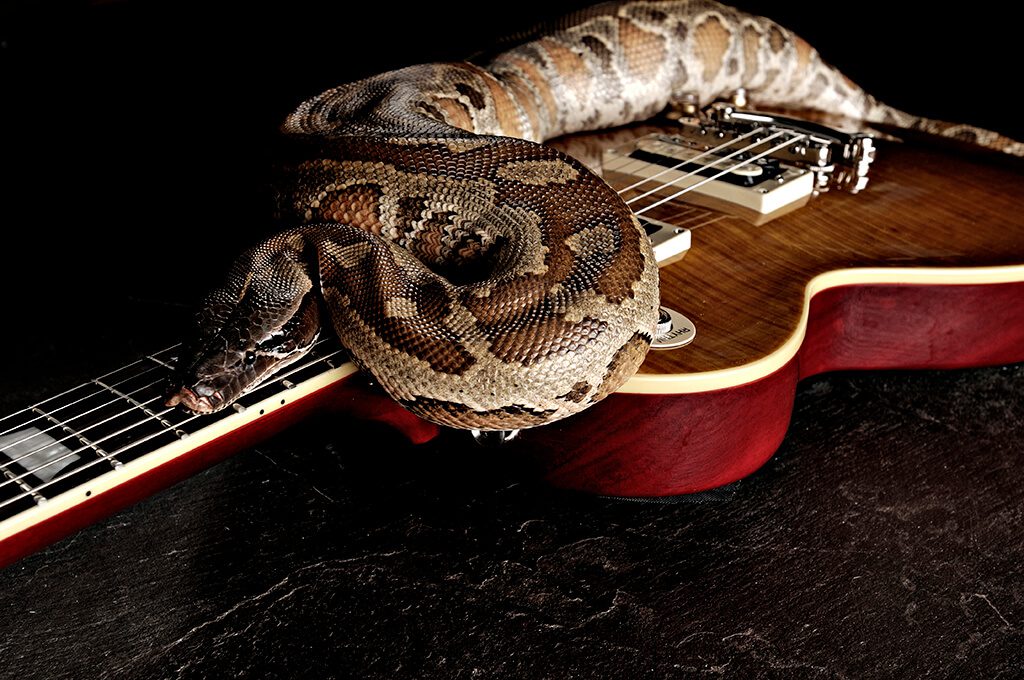
ADVERTISEMENT
At the height of Guns N’ Roses’ career, Slash was on stage rocking his Les Paul Guitar. The 1987 album Appetite For Destruction sold 28 million copies and counting and was their biggest selling debut album of all time.
ADVERTISEMENT
Slash recorded and performed hits with big riffs like, “Welcome to the Jungle,” “Sweet Child O’Mine,” and “Paradise City” playing his Slash Appetite Les Paul. Music fans are still trying to get their hands on this model, which can’t always be found for sale.
ADVERTISEMENT
Eric Clapton’s 1963 Gibson SG Les Paul Standard, Painted by The Fool
ADVERTISEMENT
ADVERTISEMENT
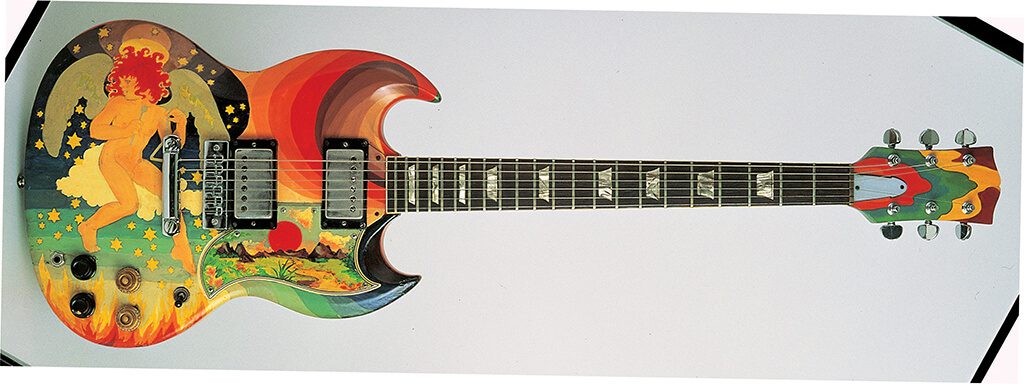
ADVERTISEMENT
Just how awesome does this psychedelic piece of music history look? This Gibson SG Les Paul Standard guitar was built in 1963 and owned by Eric Clapton. The guitar was painted by a Dutch art collector who goes by the name “Fool.”
ADVERTISEMENT
The graphics are the epitome of the era. Clapton managed to let this guitar slip out of his hands and collection when Cream disbanded in 1968, and he gave it away
ADVERTISEMENT
Joe Perry’s Gibson Les Paul
ADVERTISEMENT
ADVERTISEMENT
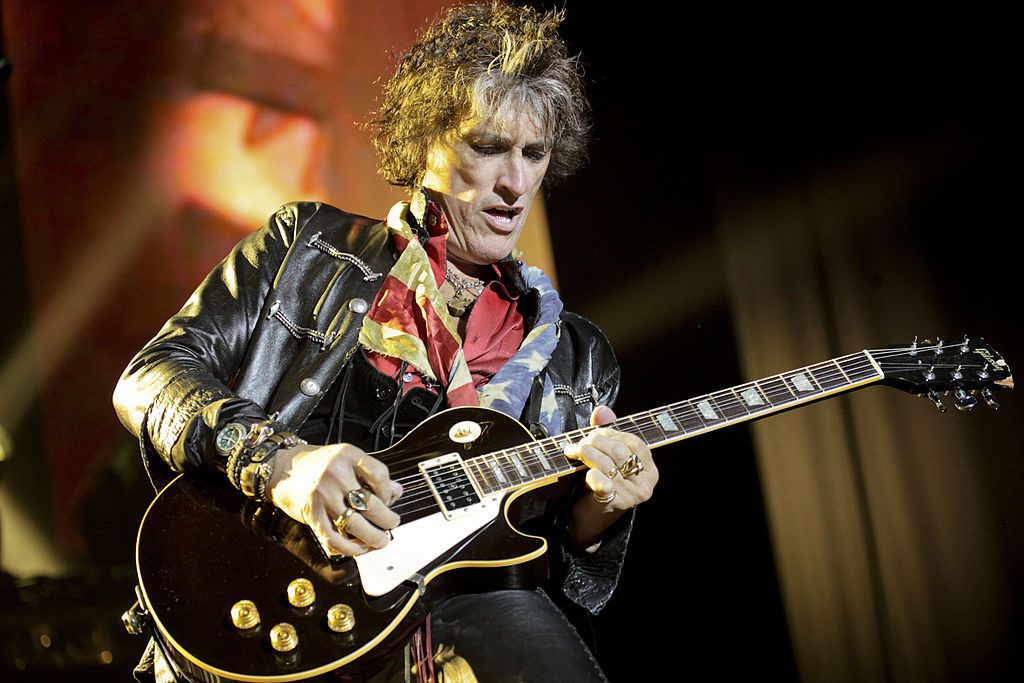
ADVERTISEMENT
Joe Perry has the looks and licks suitable for a sideman and lead guitarist. He’s kept up his talents for the better part of three decades against all odds. He’s apart of Joe Perry Project and plays for Aerosmith.
ADVERTISEMENT
They say his coolest riff came from “Walk This Way”, the Aerosmith song. He and his band elevated the common themes of the genre to the next level in the ’70s. Thanks to his Gibson Les Paul, it was all possible.
ADVERTISEMENT
Jimmy Page’s Standard Les Paul
ADVERTISEMENT
ADVERTISEMENT
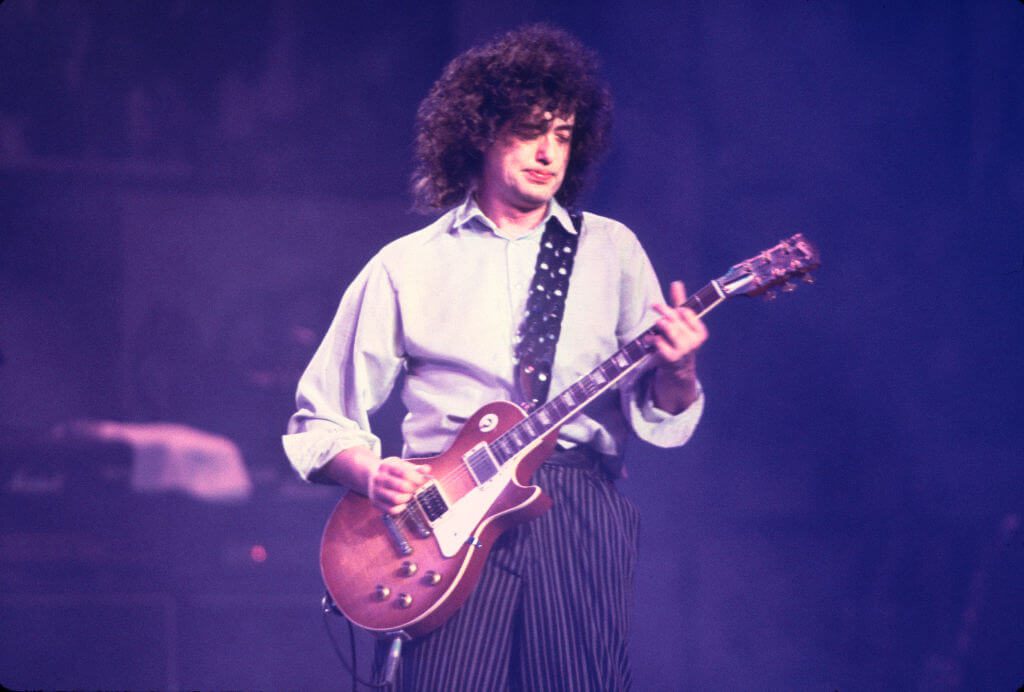
ADVERTISEMENT
We talked about his Double Neck guitar but we mustn’t forget his standard Gibson Les Paul. We couldn’t just do one of his instruments, because all of them were pretty iconic honestly. His regular Les Paul had a sunburst finish that made it seem like anyone could play the guitar and look good.
ADVERTISEMENT
Page rocked it so amazing that you have to associate it with Led Zeppelin. The looks don’t make this guitar, its the way he played it that makes it so iconic.
ADVERTISEMENT
Jeff Beck Swears By His Fender Stratocaster
ADVERTISEMENT
ADVERTISEMENT
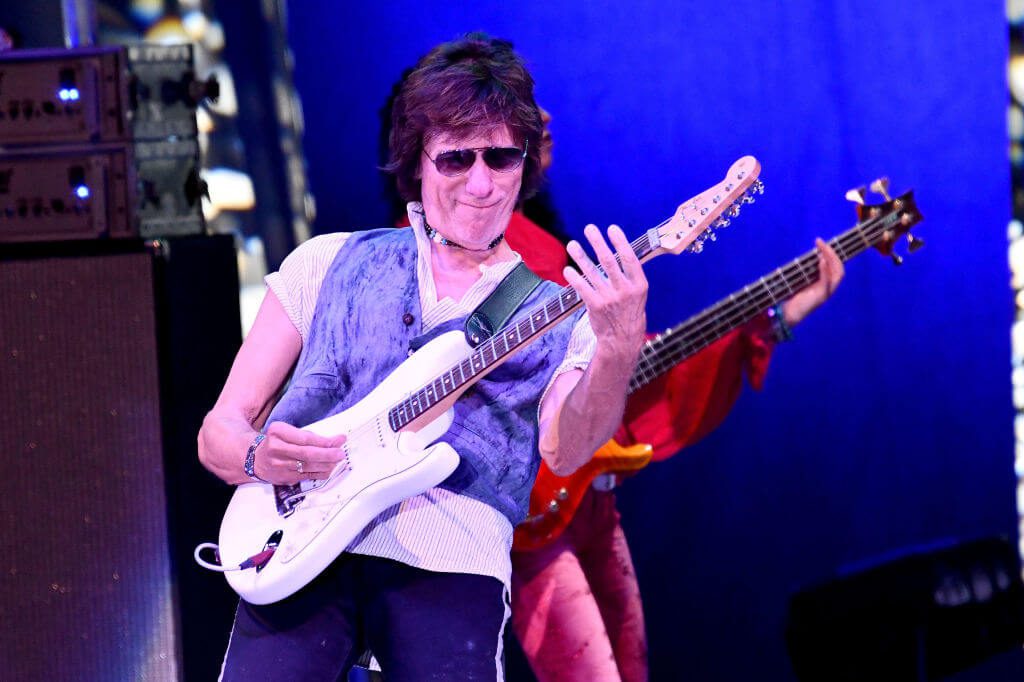
ADVERTISEMENT
Ranked as one of the greatest guitarist of all time by Rolling Stone, Jeff Beck’s musical career has spanned 50 years. During that time he’s had the opportunity to play a plethora of guitars, but there’s one that’s his favorite: Fender Stratocaster.
ADVERTISEMENT
Beck told Total Guitar, “It doesn’t feel like a guitar at all. It’s an implement which is my voice. A Les Paul feels like a guitar and I play differently on that and I sound too much like someone else. With the Strat, instantly it becomes mine, so that’s why I’ve welded myself to that. Or It’s welded itself to me, one or the other.”
ADVERTISEMENT
Stevie Ray Vaughan’s Guitars Took A Beating
ADVERTISEMENT
ADVERTISEMENT
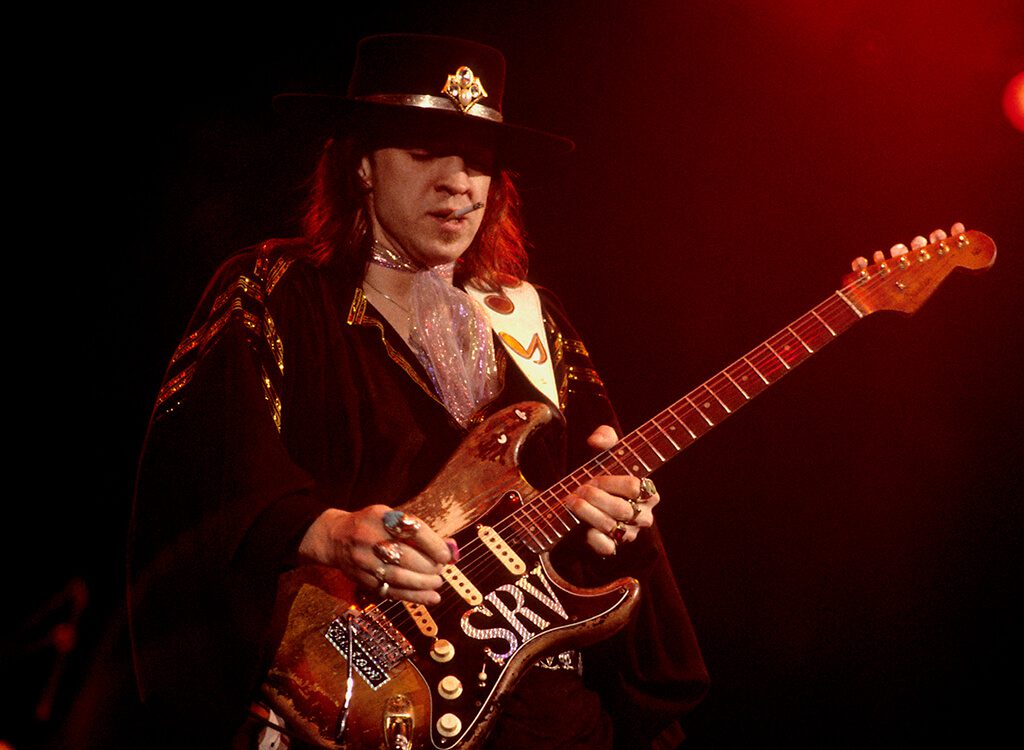
ADVERTISEMENT
Stevie Ray Vaughan was notoriously hard on his guitars and they took a beating every show. One of his Fender Stratocasters was dubbed “the most battered Strat in rock history.” The guitar featured a 1963 body and a 1962 rosewood curved fingerboard neck.
ADVERTISEMENT
Vaughan’s guitars were in constant need of repair, which he brought to Charley’s Guitar Shop in Fallas, Texas. Even though Vaughan was reckless in maintaining his guitars, artists said he could hear every malfunction an instrument would produce.
ADVERTISEMENT
Chuck Berry’s 1956 Gibson ES-350TN
ADVERTISEMENT
ADVERTISEMENT
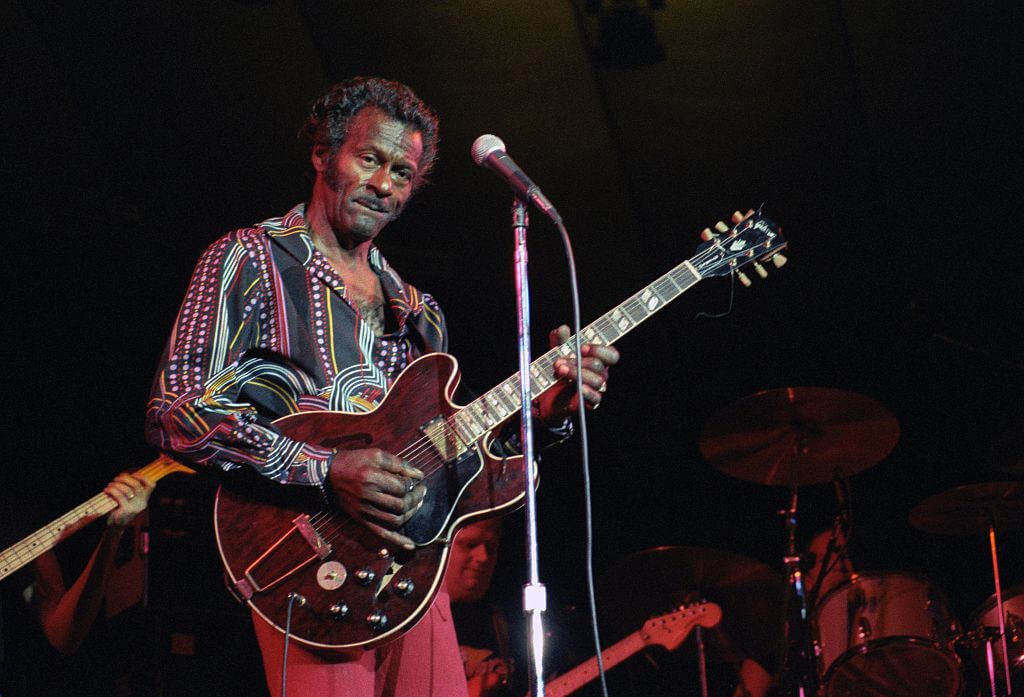
ADVERTISEMENT
Rock n roll legend Chuck Berry rose to fame after he released his single, “Maybellene” in 1955. Of all of the guitars that Berry owned and played, his 1956 Gibson ES-350TN would have to be the most remembered.
ADVERTISEMENT
It was this guitar that he played with at the beginning of his career, including when he traveled to Chicago and played with the Jimmy Johnson Trio. Berry became known as a showman, and for his “duck walk” and facial expressions while playing his guitar on stage.
ADVERTISEMENT
Mark Knopfler’s 1936 National Style-o
ADVERTISEMENT
ADVERTISEMENT
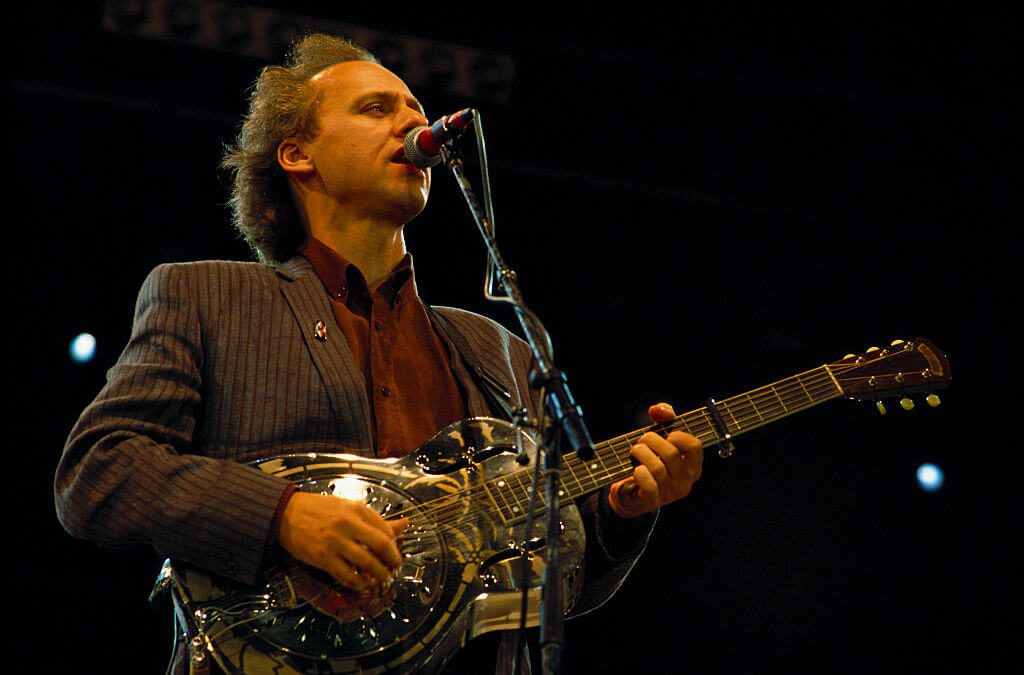
ADVERTISEMENT
Lead guitarist, singer, and songwriter of Dire Straits, Mark Knopfler didn’t slow down after the rock band disbanded in 1995. He went on to produce eight solo albums and film scores for an incredible nine films.
ADVERTISEMENT
He was ranked the 27th greatest guitarist of all time by Rolling Stones and says there are six guitars that changed his life. One of the most recognizable ones is his 1936 National Style-o. The metal body makes this guitar stand out from the rest, and the metal resonator offers incredible sound.
ADVERTISEMENT
Buddy Guy “Was So In Love With The Strat”
ADVERTISEMENT
ADVERTISEMENT
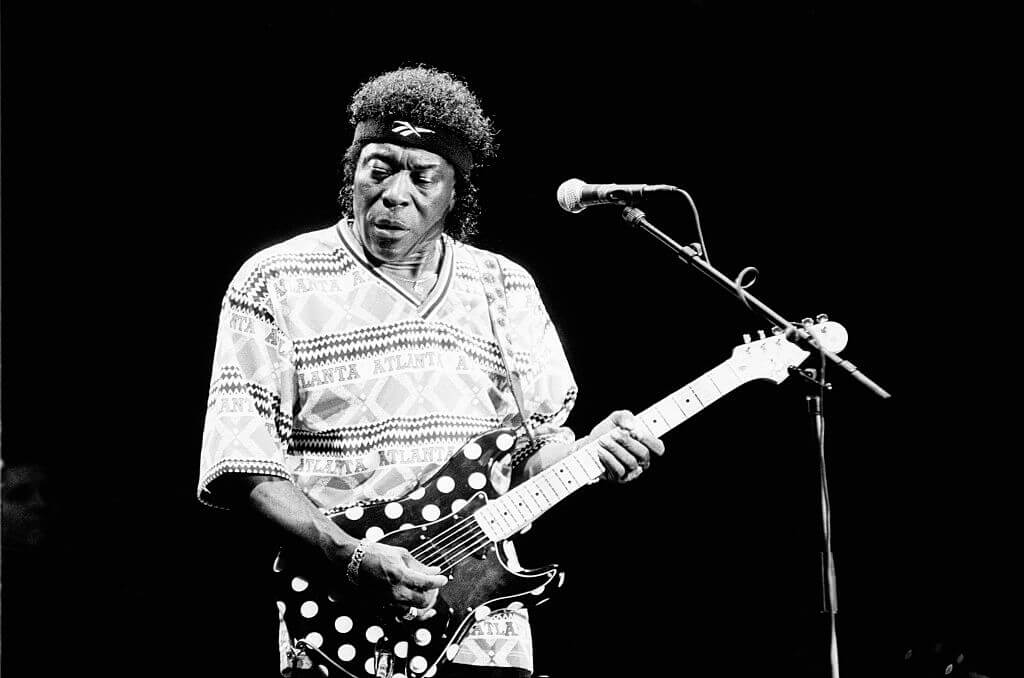
ADVERTISEMENT
Legendary blues guitarist Buddy Guy admired Guitar Slim and Big Poppa playing a Fender Stratocaster before he had his own. He told Guitar World that he thought, “Is that a guitar? What the hell is that?”
ADVERTISEMENT
When his Gibson Les Paul guitar was stolen in Chicago, Guy knew it was time to get a Strat of his own. He bought a 1957 Fender Stratocaster that he says he fell in love with. “Plus Leo Fender had that tone and that sound on it, man. So I got hooked with that experience.”
ADVERTISEMENT
Kirk Hammett Collects ESPs
ADVERTISEMENT
ADVERTISEMENT
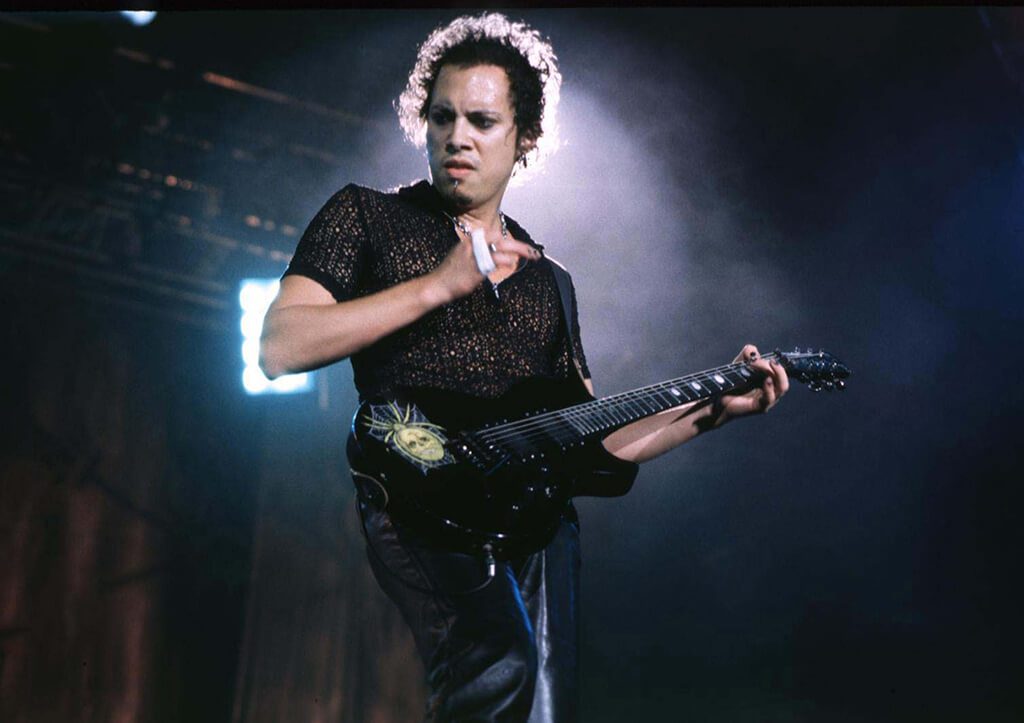
ADVERTISEMENT
Just because you own the same guitar as him does not mean you’ll sound that same. Kirk Hammett is a legend in heavy metal as the lead guitarist and contributing songwriter for Metallica. Hammett’s guitar collection includes plenty of ESPs, including this model he played at Lollapalooza in 1996.
ADVERTISEMENT
The high-profile artist has to tread carefully when it comes to lawsuits. Jackson Guitars threatened to sue him if he ever tried to sell his ESP M-II “Zorlac.” He even makes sure he has the rights to the graphic stickers he puts on his guitars.
ADVERTISEMENT
Pete Townshend’s #1 Gibson Les Paul
ADVERTISEMENT
ADVERTISEMENT
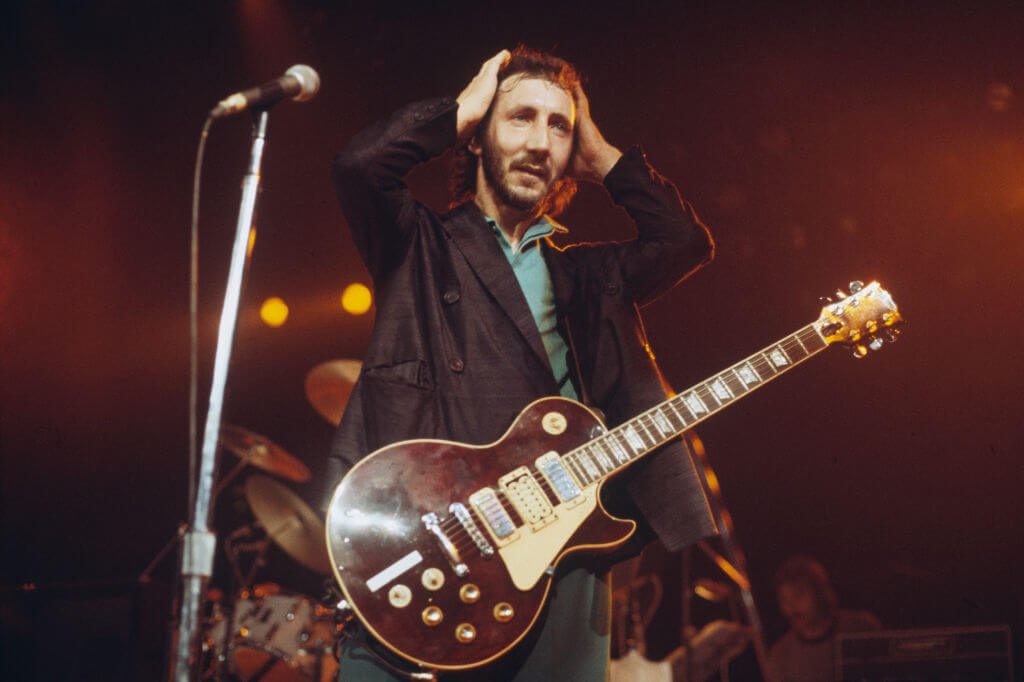
ADVERTISEMENT
Lead guitarist and vocalist-songwriter Pete Townshend has played with The Who for over 50 years. His musical talent goes well beyond a guitar- as he also plays the keyboard, banjo, accordion, harmonica, ukulele, mandolin, violin, synthesizer, bass guitar, and drums. Wow.
ADVERTISEMENT
The most iconic guitar he’s ever played is arguably his #1 Gibson Les Paul. Why is it named the #1? Townshend would tune his guitars accordingly, before a performance, and then line them up in order, by number, so he would know which one to grab for the next song. He even numbered them with white tape.
ADVERTISEMENT
Gibson Honors Robert Johnson
ADVERTISEMENT
ADVERTISEMENT
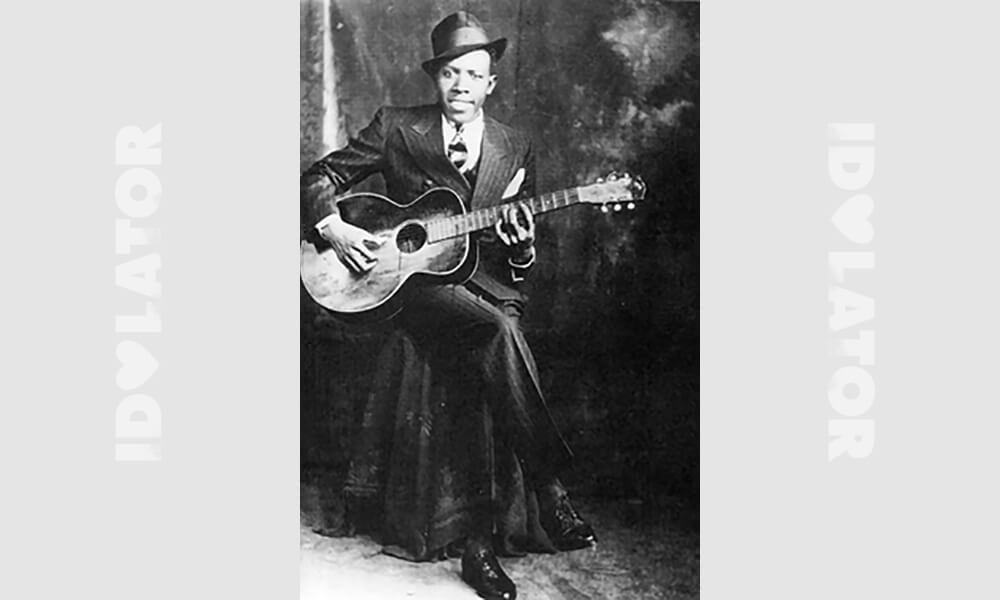
ADVERTISEMENT
Blues singer and guitarist Robert Johnson’s life was cut short. The talented artist died at the young age of 27 back in 1938. There’s not much recorded about his short life, and there are only two verified images of him in existence, but that doesn’t mean he’s been forgotten.
ADVERTISEMENT
Johnson’s talent for songwriting and playing the guitar was inspired generations after him. He was posthumously inducted in the Rock and Roll Hall of Fame during its first induction ceremony, and Gibson honored him by reissuing the Gibson L-1.
ADVERTISEMENT
Ritchie Blackmore Gave Up Gibson and Took Clapton’s Used Strat
ADVERTISEMENT
ADVERTISEMENT
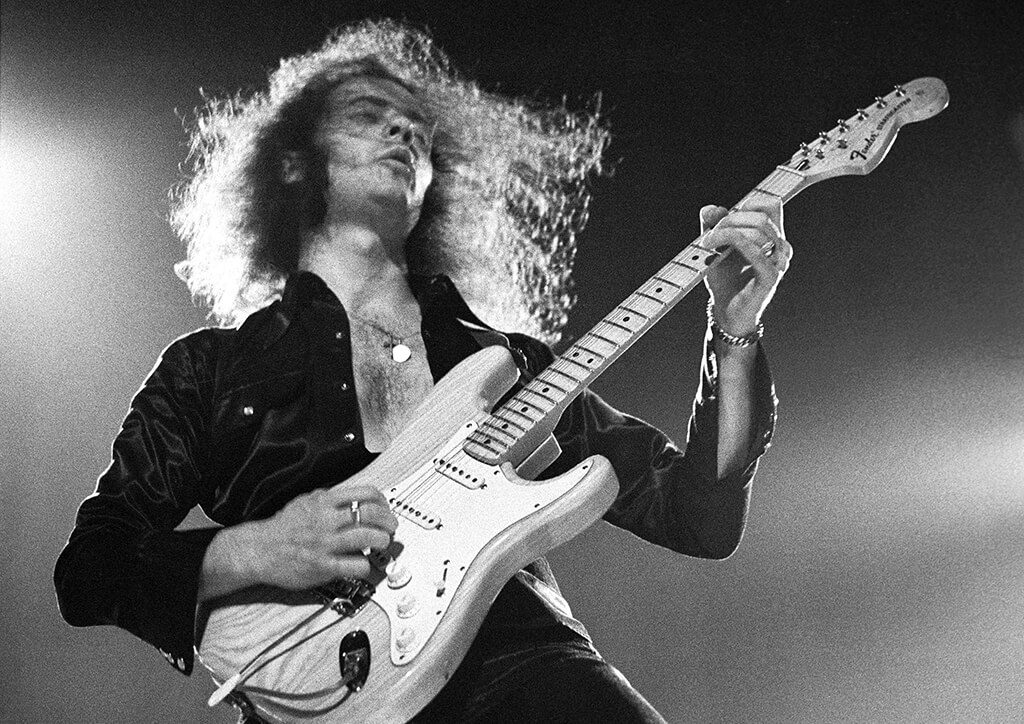
ADVERTISEMENT
One of guitarist Ritchie Blackmore’s favorite guitars from his collection used to belong to Eric Clapton. He told Guitar World that he played Gibson guitars but was then inspired by Jimi Hendrix’s Strat guitar (even though it was being played upside-down.)
ADVERTISEMENT
Then he wound up with Eric Clapton’s used Stratocaster. Clapton had given it to one of his roadies, who Blackmore knew. “I think it had a slightly bowed neck, which was making the action pretty high,” Blackmore said. He played it in Deep Purple’s “Emmaretta.”
ADVERTISEMENT
Johnny Winter’s 1965 Inverness Green Firebird
ADVERTISEMENT
ADVERTISEMENT
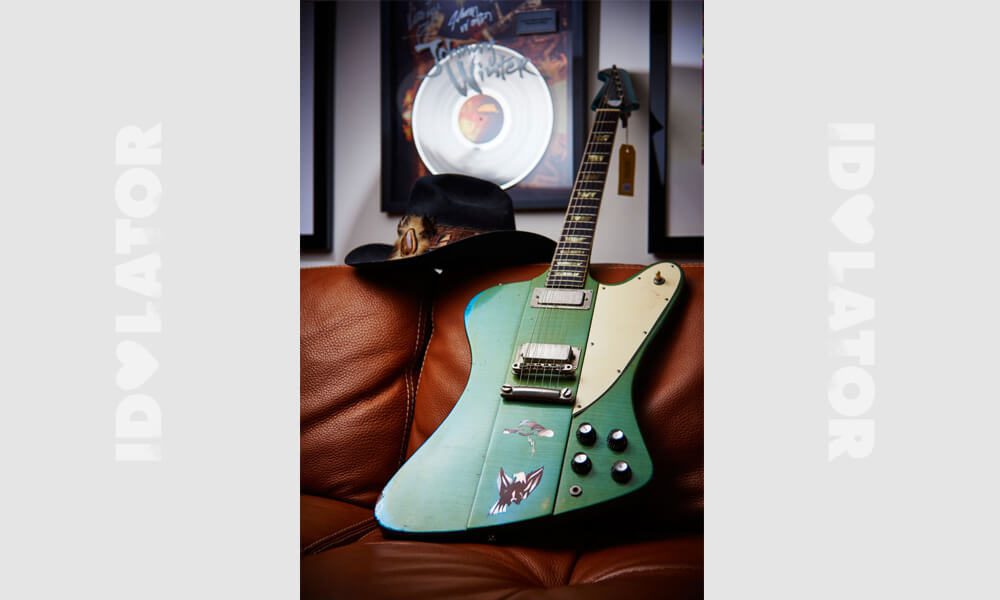
ADVERTISEMENT
Blues-rock artist Johnny Winter was known for playing his Gibson Firebird guitars. Producer of three Grammy-Award winning albums for Muddy Waters, Winter has quite a guitar collection himself.
ADVERTISEMENT
He put his 1965 Iverness Green Firebird up for sale, which sold for $60,000. The guitar features a custom pearl inlay and was played for many years during some of Winter’s biggest performances. It’s also featured in Down n’ Dirty, The Johnny Winter Story.

